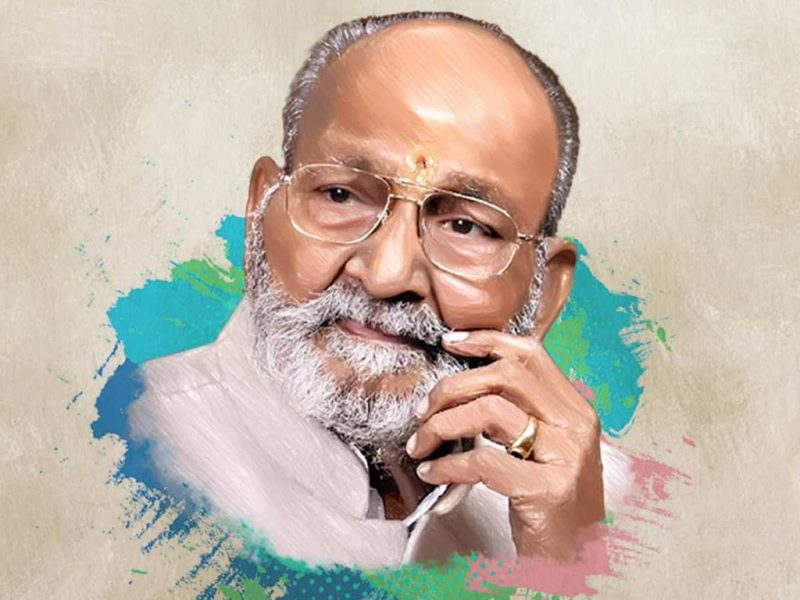
K Viswanath: The filmmaker who made people appreciate Indian arts

Legendary Telugu filmmaker K Viswanath, who passed away on Thursday (February 2) due to age-related ailments, brought a great amount of recognition to Indian arts like Carnatic music and Bharatanatyam through his movies.
But for his direction of films like Sankarabharanam and Sagara Sangamam, the Indian film industry would have remained oblivious to the rich talent of composer KV Mahadevan, cinematographer Balu Mahendra, singer SP Balasubrahmanyam, lyricist Vairamuthu and, of course, actors like Kamala Haasan and Jaya Prada.
The wonder that Viswanath was, while appreciating Indian arts through films, he weaved a fabric that kept the society together by discussing caste, criticising bygone social norms and taking up strained relationships between individuals.
Also read: People have stopped trusting filmmakers: AR Rahman
Brought sensibility
Chennai, then Madras, was home not only to Tamil cinema but also to Tollywood. Until Akkineni Nageswara Rao, the yesteryear star of Tollywood, came to Hyderabad and built Annapurna Studios in the 1970s, much of the Telugu cinema was heavily dependent on Chennai’s AVM, Vijaya Vauhini Studios and Prasad Studios. The latter two production houses were established by Telugu cinema veterans B Nagi Reddy, Moola Narayana Swamy and LV Prasad.
When Telugu cinema shifted its base to Hyderabad, it started making films on social issues. Till then, the Telugu industry followed the Tamil cinema and made cinemas based on puranas and mythology.
While yesteryear stars like NTR, Krishna and Sobhan Babu ruled the Telugu cinema, they became a laughing stock for Tamil audiences, particularly for their dark colour attire. The scene slowly changed when Chiranjeevi’s film got dubbed in Tamil. Over the years, Telugu cinema grew to the extent where story-deprived Tamil cinema in the early 2000s started fighting to get remake rights of Telugu films.
Also read: Top 10 most profitable Tamil movies of 2022
Tamil audiences started liking Telugu cinema for its over-the-top action-masala themes. But amidst this, Viswanath made films that touched human sensibilities. His debut production, Aatma Gowravam (1965), touched upon how class differences play a role in adoption. It earned him the Nandi Award.
His second film, Chelleli Kapuram (1971), dealt with the issue of dark complexion, Sarada (1973) with lunacy, O Seeta Katha (1974) on a triangular love story that was remade in Tamil as Moondru Mudichu, and Siri Siri Muvva (1976) on disability. These were unexplored themes; Viswanath’s treatment in screenplays made him a filmmaker people took notice.
Kala Tapasvi
Though Siri Siri Muvva talked about disability, it was from this film that Viswanath started dealing with Indian arts and made people appreciate them. But it was in Sankarabharanam that he unleashed his craft with full potential as a master technician.
Starring JV Somayajulu, the movie portrayed the beauty of Carnatic music and how artists were left in the lurch when people embraced Western music after terming Indian arts old and boring. It showed how the society treats a guru and his student, a girl from a family of sex workers.
The film was a turning point in playback singer SPB’s career. He sang nine out of 10 songs in this film and for which he was awarded his first national award.
For his accomplishments as a filmmaker, Viswanath was honoured with the Dadasaheb Phalke award in 2017. He was known popularly in Tamil Nadu and would be remembered certainly for his 1983 movie Salangai Oli, a Tamil dubbing of Sagara Sangamam.
The film showcases how a talented dancer is unable to shine as he does not lobby. Viswanath extracted dancing skills from Kamal Haasan more than any other filmmaker the actor had worked with. It would not be an exaggeration to say that it was the movie that made Kamal what he is now, in terms of his acting prowess.
Film writer Suresh Kannan says that following the release of this film, many men started to learn classical dance forms like Bharatanatyam which were perceived as a female bastion.
The scene in which Kamal explores various dance forms for a same song is nothing but poetry in motion. If Satyajit Ray’s portrayal of Durga dancing in the rain (Pather Panchali) became a legacy in Indian cinema, then Kamal’s dancing over the well during the rain in a song sequence could be seen as Viswanath’s tribute to Ray.
The music of Ilayaraaja and the songs of Vairamuthu made the audience to forget that this was a dubbed film.
Under-utilised actor
Apart from direction, Viswanath also appeared in many films. Films in Tamil like Kuruthipunal (1995) and Yaaradi Nee Mohini (2008) will be remembered for his talent. If he could have pursued acting seriously, Tamil cinema would have got another actor of par excellence with yesteryear character artist SV Ranga Rao.
There was a scene in Sagara Sangamam where Viswanath makes fun of how the then Telugu cinema orchestrated sexually explicit movements in choreography. But there is more to the film. Viswanathan questioned what is the place for an artist who works with some ethics which he does not compromise for professional success.
It was this rarity of introspection that made Viswanath to stand out in a crowd. It is true that the protagonist Balakrishna is none but the reflection of Viswanath’s own self. He never compromised his art for commercial success. As Sagara Sangamam ends with the note, ‘No End For Any Art’, the same applies to Viswanath’s art.


